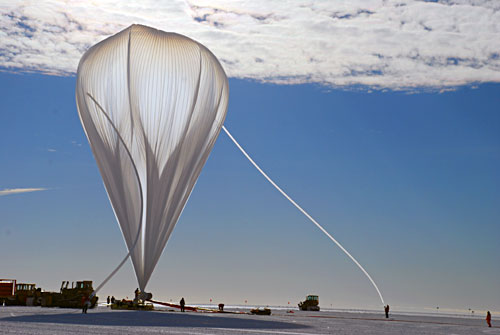
Studying cosmic rays, antimatter, ice sheets, and more using scientific balloons
Despite its reputation for some of the coldest, fiercest weather on the planet, Antarctica is the hot spot for the little-known but expanding field of scientific ballooning, including NASA’s Ultra Long Duration Balloon Project. Scientific balloons are the cheapest, fastest way to carry payloads of up to 8,000 pounds to heights of up to 120,000 feet (36.5 km), where the earth’s atmosphere gives way to near space. Made of tough polyethylene film, the balloon material is as thin as ordinary kitchen plastic wrap. Once released, the droplet-shaped balloons expand to the size of a stadium as they ascend into the thinning air, where they can remain for weeks and even months.

Two things make Antartica an optimal site for scientific ballooning. The first is the circumpolar wind, a strong steady wind high in the stratosphere that carries balloons steadily and predictably around the globe. The second is the nightless Antarctic summers, which minimize the daily heating and cooling by the sun that causes balloons to lose altitude over time.
Balloon-borne projects include ATIC, a device to study cosmic rays; BESS, an antimatter detector; and ANITA, which uses the entire Antarctic ice sheet as a collecting aperture to detect high-energy neutrinos.








